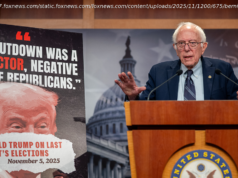President Donald Trump’s administration may send up to 1,000 active-duty troops to the U. S.-Mexico border, U. S. officials said on Thursday, as Trump hammered away at the issue of illegal immigration ahead of Nov. 6 congressional elections with a caravan of Central American migrants trekking through Mexico.
WASHINGTON (Reuters) – President Donald Trump’s administration may send up to 1,000 active-duty troops to the U. S.-Mexico border, U. S. officials said on Thursday, as Trump hammered away at the issue of illegal immigration ahead of Nov. 6 congressional elections with a caravan of Central American migrants trekking through Mexico.
“I am bringing out the military for this National Emergency. They will be stopped!” Trump wrote on Twitter, referring to the thousands of migrants – men, women and children – currently in southern Mexico heading toward the United States.
The Department of Homeland Security (DHS) has asked the Pentagon to send forces to the border in a preliminary request that could require deploying between 800 and 1,000 active-duty troops, two U. S. officials said, speaking on condition of anonymity.
Under a federal law dating to the 1870s, the U. S. military is prohibited from carrying out civilian law enforcement on U. S. soil unless specifically authorized by Congress. Some specific statutes authorize the president to deploy troops within the United States for riot control or relief efforts after natural disasters.
Although Trump’s language in recent days has suggested the military might be directly involved in preventing the migrants from entering the United States, one official said the troops would engage only in logistics and infrastructure services, like setting up tents, and not law enforcement activities.
There are currently 2,100 National Guard troops along the U. S. border in Texas, New Mexico, Arizona and California.
The Pentagon said in a statement it was working with DHS to “determine the specifics of our support” to the Customs and Border Protection agency, part of DHS, but did not elaborate on any potential deployment of active-duty troops.
Trump and his fellow Republicans have sought to make the caravan and immigration major issues ahead of the midterm elections in which the party is trying to maintain control of the House of Representatives and the Senate.
Trump has taken a hard line toward immigration – legal and illegal – since becoming president last year. On Monday, Trump said he had alerted the Border Patrol and the U. S. military that the migrant caravan was a national emergency.
Despite raising Trump’s ire, thousands of Central American migrants seeking to escape violence, poverty and government corruption in their home countries continued their journey toward the distant U. S. border.
Under a full moon early on Thursday, they walked from Mapastepec, close to the Guatemala border in southern Mexico. A town official said there had been 5,300 migrants in Mapastepec on Wednesday night.
A second group of more than a thousand people has started a similar journey from Guatemala. ‘GO BACK’
“To those in the Caravan, turnaround, we are not letting people into the United States illegally. Go back to your Country and if you want, apply for citizenship like millions of others are doing!” Trump wrote on Twitter.
It is not new territory for Trump, who pledged during the 2016 presidential race to build a wall along the southern U. S. border with Mexico. However, funding for his signature campaign promise has been slow to materialize even though his party controls Congress and the White House.
In April, frustrated by lack of progress on the wall, Trump ordered the National Guard to help secure the border in the four southwestern border states. The requested Pentagon deployment could be the first large-scale deployment of active duty U. S. military forces to support the border protection mission under Trump.
Adam Isacson, an official at the Washington Office on Latin America, a group that advocates for migrant rights, expressed misgivings about the potential deployment.
“Even if it’s a short-term deployment, it’s another step toward militarization of our border,” Isacson said, adding that 40 percent of people being apprehended at the order are children and families.
“This is the time you want to send the opposite of the military,” Isacson said.






